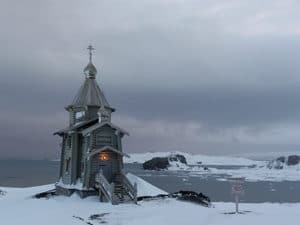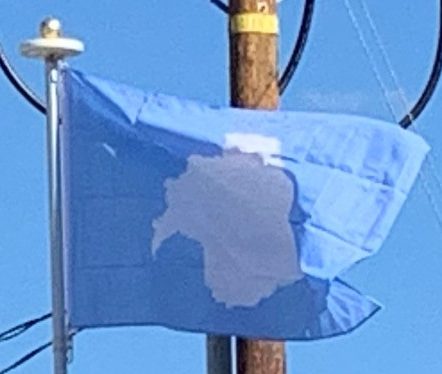In September 2018, researchers at the National Geospatial-Intelligence Agency released a high resolution terrain map (detail down to the size of a car, and less in some areas) of Antarctica, named the “Reference Elevation Model of Antarctica” (REMA).
Population:
Several governments maintain permanent manned research stations on the continent. The number of people conducting and supporting scientific research and other work on the continent and its nearby islands varies from about 1,000 in winter to about 5,000 in the summer. Many of the stations are staffed year-round, the winter-over personnel typically arriving from their home countries for a one-year assignment. An Orthodox church—Trinity Church, opened in 2004 at the Russian Bellingshausen Station—is manned year-round by one or two priests, who are similarly rotated every year.

The first semi-permanent inhabitants of regions near Antarctica (areas situated south of the Antarctic Convergence) were British and American sealers who used to spend a year or more on South Georgia, from 1786 onward. During the whaling era, which lasted until 1966, the population of that island varied from over 1,000 in the summer (over 2,000 in some years) to some 200 in the winter. Most of the whalers were Norwegian, with an increasing proportion of Britons. The settlements included Grytviken, Leith Harbour, King Edward Point, Stromness, Husvik, Prince Olav Harbour, Ocean Harbour and Godthul. Managers and other senior officers of the whaling stations often lived together with their families. Among them was the founder of Grytviken, Captain Carl Anton Larsen, a prominent Norwegian whaler and explorer who, along with his family, adopted British citizenship in 1910.
The first child born in the southern polar region was Norwegian girl Solveig Gunbjørg Jacobsen, born in Grytviken on 8 October 1913, and her birth was registered by the resident British Magistrate of South Georgia. She was a daughter of Fridthjof Jacobsen, the assistant manager of the whaling station, and Klara Olette Jacobsen. Jacobsen arrived on the island in 1904 and became the manager of Grytviken, serving from 1914 to 1921; two of his children were born on the island.
Emilio Marcos Palma was the first person born south of the 60th parallel south (the continental limit according to the Antarctic Treaty), as well as the first one born on the Antarctic mainland, in 1978 at Base Esperanza, on the tip of the Antarctic Peninsula; his parents were sent there along with seven other families by the Argentine government to determine if the continent was suitable for family life. In 1984, Juan Pablo Camacho was born at the Frei Montalva Station, becoming the first Chilean born in Antarctica. Several bases are now home to families with children attending schools at the station. As of 2009, eleven children were born in Antarctica (south of the 60th parallel south): eight at the Argentine Esperanza Base and three at the Chilean Frei Montalva Station.
Economy:
There is no economic activity in Antarctica at present, except for fishing off the coast and small-scale tourism, both based outside Antarctica.
